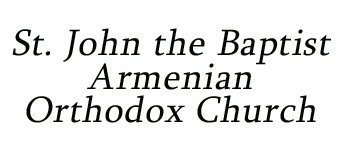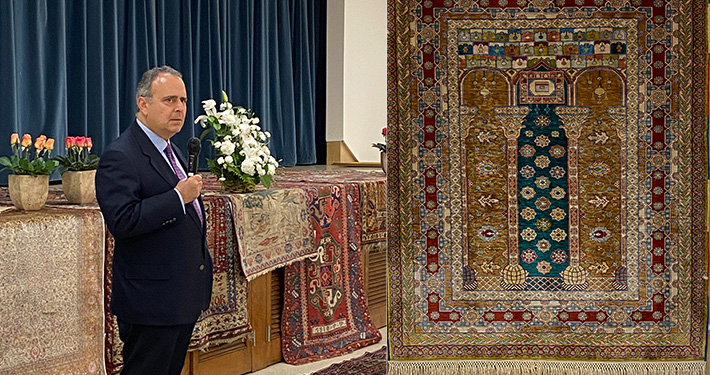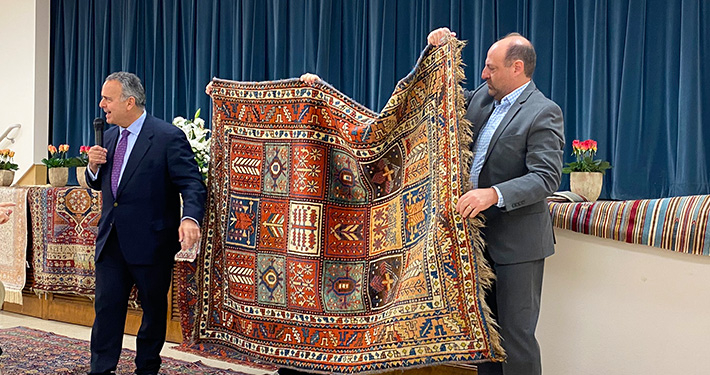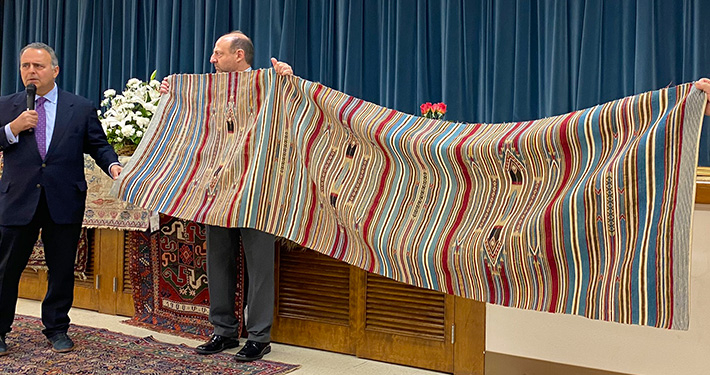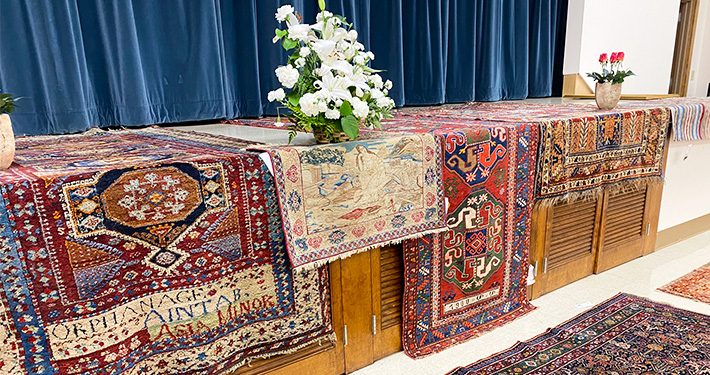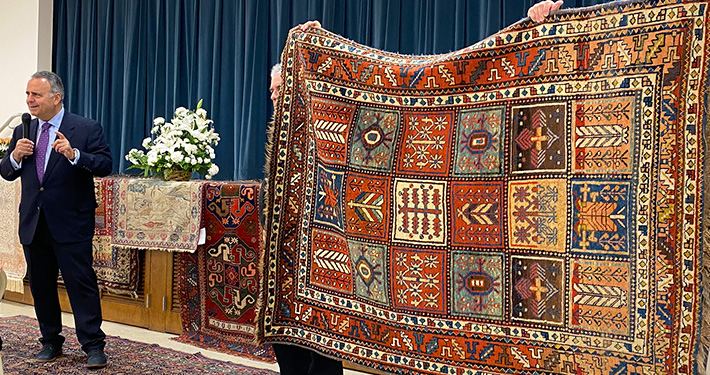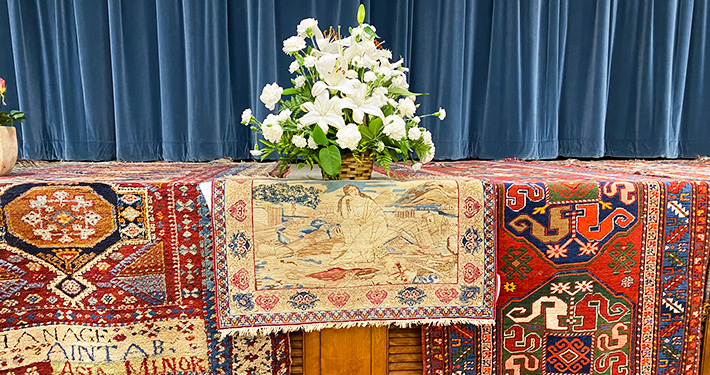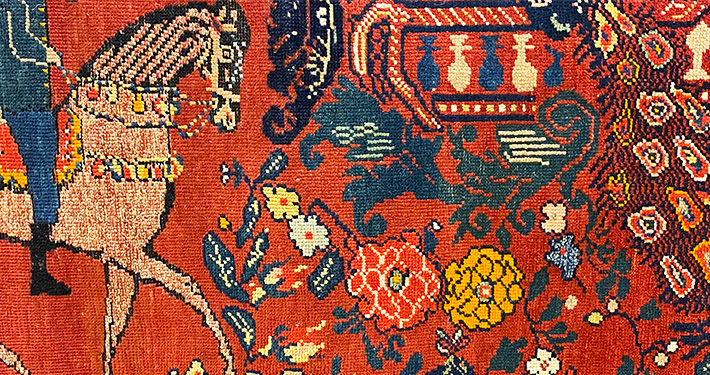Oscar Tatosian’s Stories of Armenian Carpets
Sunday, October 2, 2022
By David Luhrssen
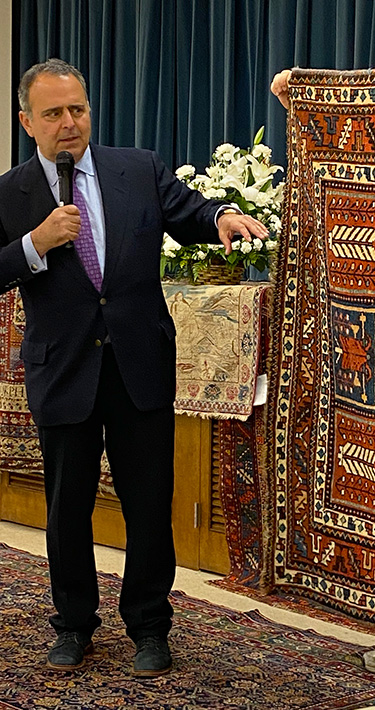 Oscar Tatosian is a familiar name to Midwest Armenians. He was on the Eastern Diocese’s Diocesan Council for many years and continues to sit on the boards of the Fund for Armenian Relief and the Armenian Assembly of America. He is also Honorary Consul of the Armenian Republic in Chicago. His “day job,” as he puts it, is the family business established by his grandfather in 1920, Oscar Isberian Carpets, which he owns and operates with his brother Sarkis. On Sunday, Oct. 2, 2022, Tatosian gave a talk on Armenian carpets at St. John the Baptist Armenian Church in Milwaukee, Wisconsin, illustrated by a display of carpets.
Oscar Tatosian is a familiar name to Midwest Armenians. He was on the Eastern Diocese’s Diocesan Council for many years and continues to sit on the boards of the Fund for Armenian Relief and the Armenian Assembly of America. He is also Honorary Consul of the Armenian Republic in Chicago. His “day job,” as he puts it, is the family business established by his grandfather in 1920, Oscar Isberian Carpets, which he owns and operates with his brother Sarkis. On Sunday, Oct. 2, 2022, Tatosian gave a talk on Armenian carpets at St. John the Baptist Armenian Church in Milwaukee, Wisconsin, illustrated by a display of carpets.
He admitted that in his business of buying and selling Oriental carpets, specifically Armenian carpets are “a small niche but a big passion.” Many of the carpets he displayed were in near perfect condition, despite their age. They were “treasures, cherished, often kept rolled up” when not in use.
Tatosian had a story for each of his rugs. Among the most unusual concerned his discovery of an Armenian rug in a hotel atrium in Lahore, Pakistan. The silk rug with a woven inscription in Armenian depicted the crucifixion as drawn in illuminated Armenian manuscripts. The Pakistani rug dealer had no idea of its meaning. Tatosian said it was probably woven in Kashmir by Armenians who settled there centuries ago.
Armenians were among the world’s earliest carpet makers and the best carpets are works of art, woven embodiments of Armenian culture. Each village had its own patterns and designs, as distinct as the wines from different vineyards in France. Among the other carpets he displayed was a kilim woven in Aleppo, Syria from silk wool and linen with an almost Navajo design; a large “garden design” carpet by Persian Armenians whose geometric forms represent a family compound complete with individual houses, garden and irrigation cannels; a carpet whose dragons symbolize wisdom; and a 1950s machine-woven carpet from Soviet Armenia. The Soviet carpets, he explained, replicated traditional Armenian designs “but look a little perfect—they don’t have the character of traditional rugs,” hand woven without electricity. “There was more whimsy and freedom in the antique rugs,” Tatosian added.
Also in his collection was a carpet depicting horsemen and peacocks woven in Artsakh, dated 1904 and inscribed with the names of its original owners. One of his favorites, another discovery on one of his trips to Pakistan, is a circa 1900 rug depicting Mother Armenia amidst the ruins of Ani after the famous painting.
Tatosian travels annually to Armenia and creates jobs in the homeland, not only for weaving new carpets but repairing old ones for his customers in the U.S.
